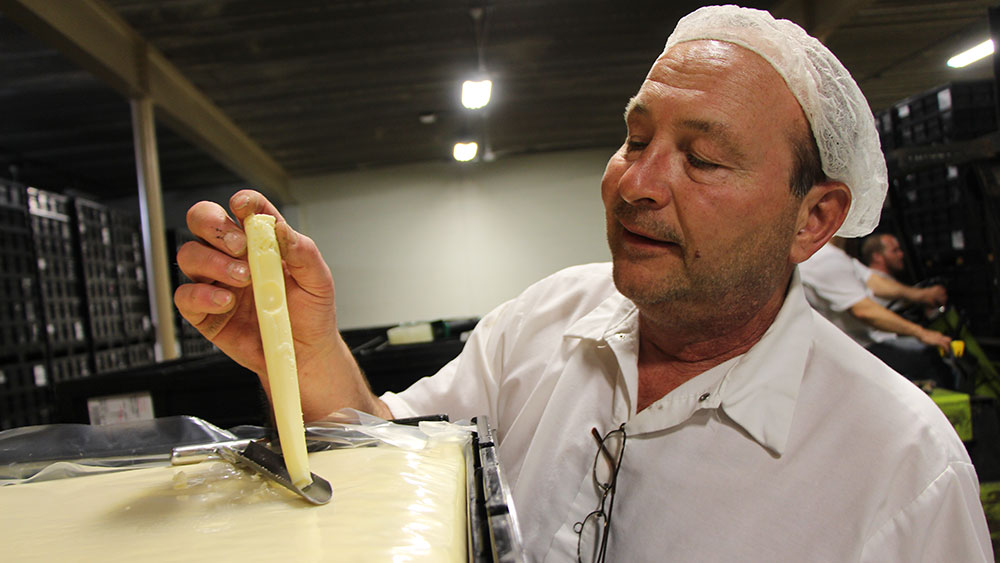Discovering Melbourne Made Cheese: Why Floridia Cheese Is a Must-Try
Discovering Melbourne Made Cheese: Why Floridia Cheese Is a Must-Try
Blog Article
Opening the Secrets of Artisanal Cheese Making: A Detailed DIY Overview
In the world of cooking workmanship, artisanal cheese making stands as a testimony to the fragile equilibrium in between custom and development. As we begin on this journey to demystify the art of producing exquisite cheeses, we are encountered with a tapestry of keys and abilities waiting to be untangled.
Picking the Right Milk
When getting started on the journey of artisanal cheese making, the option of milk plays an important role in identifying the top quality and features of the last item. The kind of milk selected affects the taste, texture, and generally profile of the cheese.
Furthermore, the resource of the milk, whether from cows, goats, sheep, or buffalo, adds distinct flavors and characteristics to the cheese. Each kind of milk brings its own subtleties, allowing for a broad variety of cheese ranges to be crafted based on the picked milk.
Culturing and Coagulating
To initiate the cheese-making process, the vital actions of culturing and coagulating have to be carefully performed to transform milk right into curds and whey. Culturing entails introducing helpful microorganisms to the milk, which then begins the fermentation process. These germs transform lactose (milk sugar) into lactic acid, producing the acidic atmosphere needed for coagulation. The kind of culture utilized can considerably affect the flavor, texture, and ripening of the last cheese item.

The timing and temperature control throughout culturing and coagulation are critical variables that affect the last result of the cheese. Proper execution of these steps is necessary to make sure the preferred appearance, taste, and uniformity of the artisanal cheese being generated.
Draining Pipes and Pushing Curds
After the milk proteins have coagulated and the curds have been cut to launch whey, the following critical step in artisanal cheese making entails draining pipes and pressing the curds to attain the preferred structure and uniformity of the final cheese item. The time for draining can differ depending on the kind of cheese being made and the preferred dampness web content.
Once the curds have completely drained, the next his explanation step is pushing. Pushing aids remove any type of continuing to be whey and compacts the curds to create a strong cheese wheel. Pressing can be done using specialized cheese presses that apply regular and mild stress over a time period. The duration and pressure applied throughout pushing will affect the final texture of the cheese, from velvety and soft to difficult and firm. Appropriate draining pipes and pushing are vital actions that significantly impact the quality and qualities of the artisanal cheese being created.
Aging and Flavoring Strategies
Implementing precise aging and flavoring methods is essential in improving the deepness and complexity of artisanal cheeses, elevating their taste accounts to elegant levels of improvement and elegance. Aging plays a critical role in developing the one-of-a-kind flavors and structures that identify artisanal cheeses.
Seasoning techniques likewise add substantially to the final taste of artisanal cheeses. Cheesemakers may pick to present additional flavors by integrating active ingredients such as natural herbs, seasonings, or even fruits click to investigate into the cheese throughout the manufacturing procedure. In addition, some cheeses are washed or rubbed with different liquids, such as salt water or alcohol, to enhance their flavors and textures.
Covering and Saving Cheeses

Final Thought
In conclusion, understanding the art of artisanal cheese making entails thoroughly choosing the ideal milk, adhering to precise culturing and coagulating processes, draining and pressing curds successfully, and making use of various hop over to these guys aging and flavoring techniques. Remember to wrap and store your cheeses correctly to guarantee ideal flavor and structure advancement.
Each type of milk brings its own nuances, permitting for a wide range of cheese selections to be crafted based on the picked milk.After the milk healthy proteins have actually coagulated and the curds have actually been reduced to launch whey, the following vital step in artisanal cheese making entails draining pipes and pushing the curds to accomplish the preferred structure and consistency of the final cheese product. Most cheeses need to be covered in wax paper or cheese paper to permit them to take a breath while safeguarding them from drying out. For cheeses that need to continue aging, such as bloomy peels or cleaned skins, guarantee they are stored in an amazing atmosphere like a cheese cave or a refrigerator set to the appropriate temperature level. By paying focus to the covering and storage space of artisanal cheeses, cheese makers and lovers can preserve the integrity of these delicacies and totally appreciate their intricate tastes.
Report this page